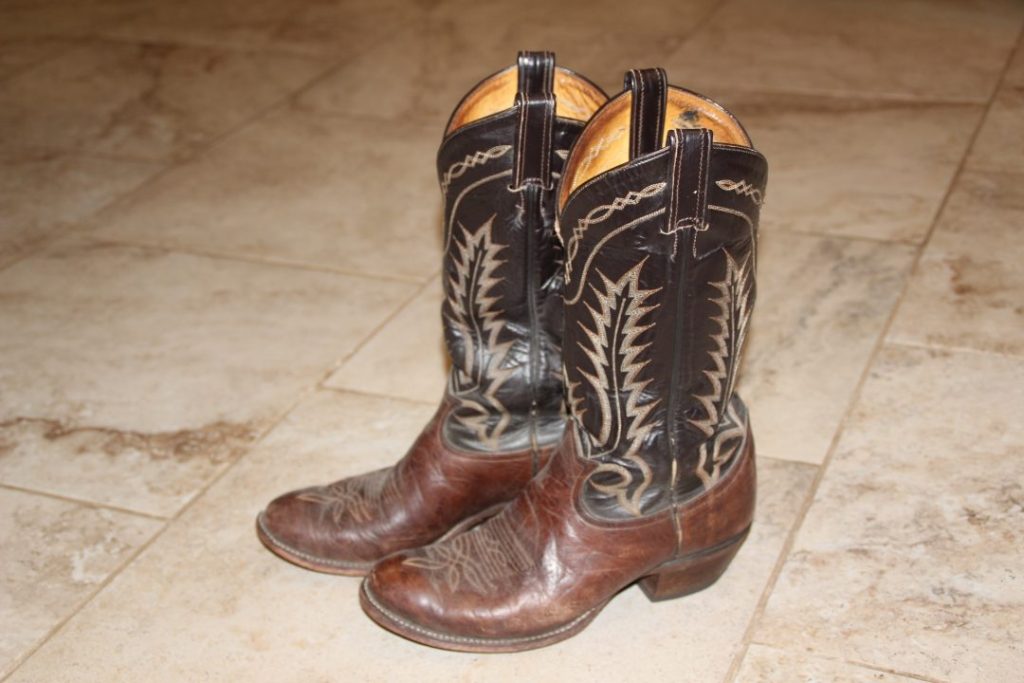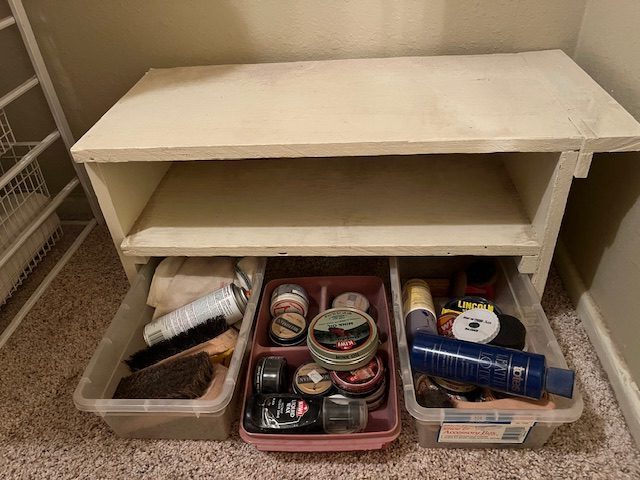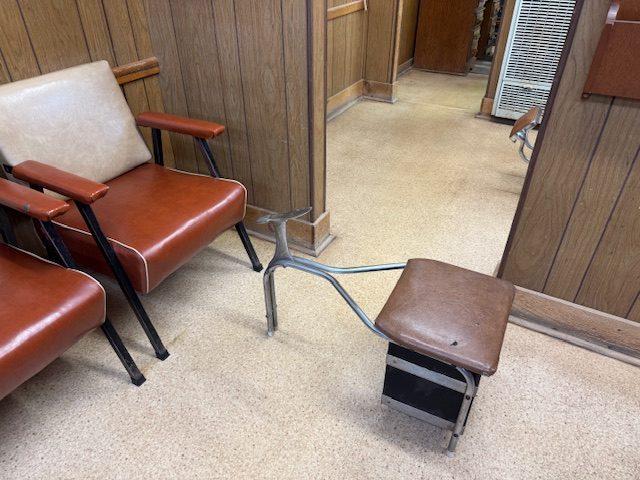Going through Bill’s clothes the other day, looking for new homes for them so someone can get some good out of them, I came across a somewhat forgotten pair of Tony Lamas in the corner. They were clean, but dusty. Which made me think of how shined shoes and boots were important to Bill and my dad.
My dad grew up in a family of six children. Money was short and work was expected of him. Hard manual labor that was hard on footwear, work boots or shoes, and I suspect that clean shiny footwear was low on the list of things to worry about. As an adult he still worked hard, but those shoes and boots were now given attention. I think nice clean footwear was a sign of success and stability for him. Taking care of work boots and shoes also meant they would last longer, so taking care of them was just a good thing to do
Bill didn’t grow up in a family of six, but he did do considerable manual labor as a teenager working for his Uncle Stanley building bridges and overpasses in Oklahoma and Arkansas, which is also where I think he developed his strong work ethic and learned the construction skills he put to good use, just like my daddy. He always took good care of his footwear, too. They both shined their own, but they also from time to time, enjoyed a professional spit shine, which, by the way, may really have involved spit in the early days, but does still need a bit of water in the process these days.
My dad and Bill had their own supply of brushes, rags, shoe polish, and mink oil to take care of their boots, but would also sometimes have them polished by a bootblack, as they were originally called, probably because of the “blacking” used to care for English soldiers’ boots as far back as 1817. Something called lampblack was used to bring out the mirror-like shine. Bootblacks were traditionally young boys whose fathers may have died or could no longer work, and shining shoes was a source of income for the family. Girls might do the job, too, but it was mostly boys. These boys would just drop down and shine shoes on the street when a customer appeared, but a some point, someone came up with shoe shine stands that began to appear in railroad stations, hotel lobbies, and eventually adding a shoe shine chair to services rendered at barber shops.
Men could sit and have their shoes or boots cleaned and polished while waiting their turn in the barber’s chair. I can remember at least once Daddy took me to have my boots shined at the barber shop. It felt really good, all that rubbing and polishing on my feet! And all the polish smelled good. Most barber shops no longer provide that service now. That may be because no one wants to shine shoes anymore, men don’t care as much about having clean footwear, or that tennis shoes have become pretty much the order of the day for everyone except those who enjoy the Western look. And speaking of Western, you can bet that plenty of shoeshine stands can be found at events like the Houston Fat Stock Show and Rodeo for the well-dressed cowboys and cowgirls. Shoe shine stands can still be found in big city hotels and train stations.
Shoe shines were available in Frank Parker and Curtis Smith’s Sanitary Barber Shop in Muleshoe, mostly on Saturdays. The customer would just sit in any of the shop’s chairs and the shoe shine person would move his stool and equipment box around to the customer. The stool was still in the shop, but the box full of polish and brushes was gone at the time of this picture.
Photo courtesy of Dana Rasco
In my research I discovered that in European and other countries shoeshining is still going strong, perhaps more so than in the U.S. But there as well as here, competitions are held to recognize perfection in the skill.
Styles in clothes and shoes have changed considerably since Bill and my dad shined their shoes, but back in those days, a well-dressed person would have paid attention to that detail. Polished footwear has been a marker of the upper class since the early 18th century and is still important today. Men, especially, would see to it their footwear was clean and neat. Women needed clean shoes as well. Cowgirls, too. In my case, spending time showing and riding horses made it important to me to have clean boots. Maybe I am more aware of shiny boots since I like the George Strait style and my husband fit that look, but clean boots do make a difference. When I see a man dressed in neat cowboy or business fashion, or even casually dressed, when I see unkempt footwear, well, it just ruins the look and the impression he makes loses some of its charm.
‘Cause, ya’ know, as ZZ Top always told us, “Every girl crazy ’bout a sharp-dressed man.”
You betcha !
Thanks to Dana Rasco and Elaine Bowman for their help with this story.




Good story, Alice. It brings up things I hadn’t thought about in years, like shiny boots and shoeshine stands. I like the image of your daddy taking you to the barbershop to get your boots shined.
Glad you enjoyed the story.
or on July 4,2024 at 4:41
S
Hi Alice,Thank you so much for your story!Reminded me of my Father!Great
memory.(cool shoes)
Glad you enjoyed the story!